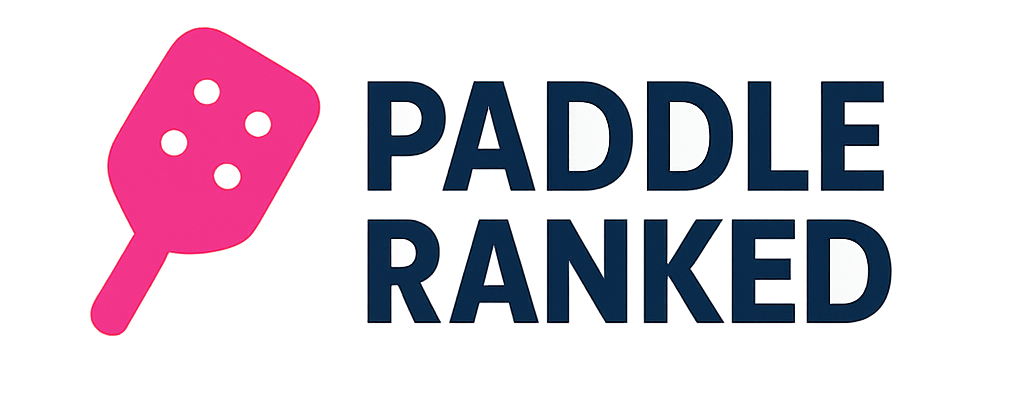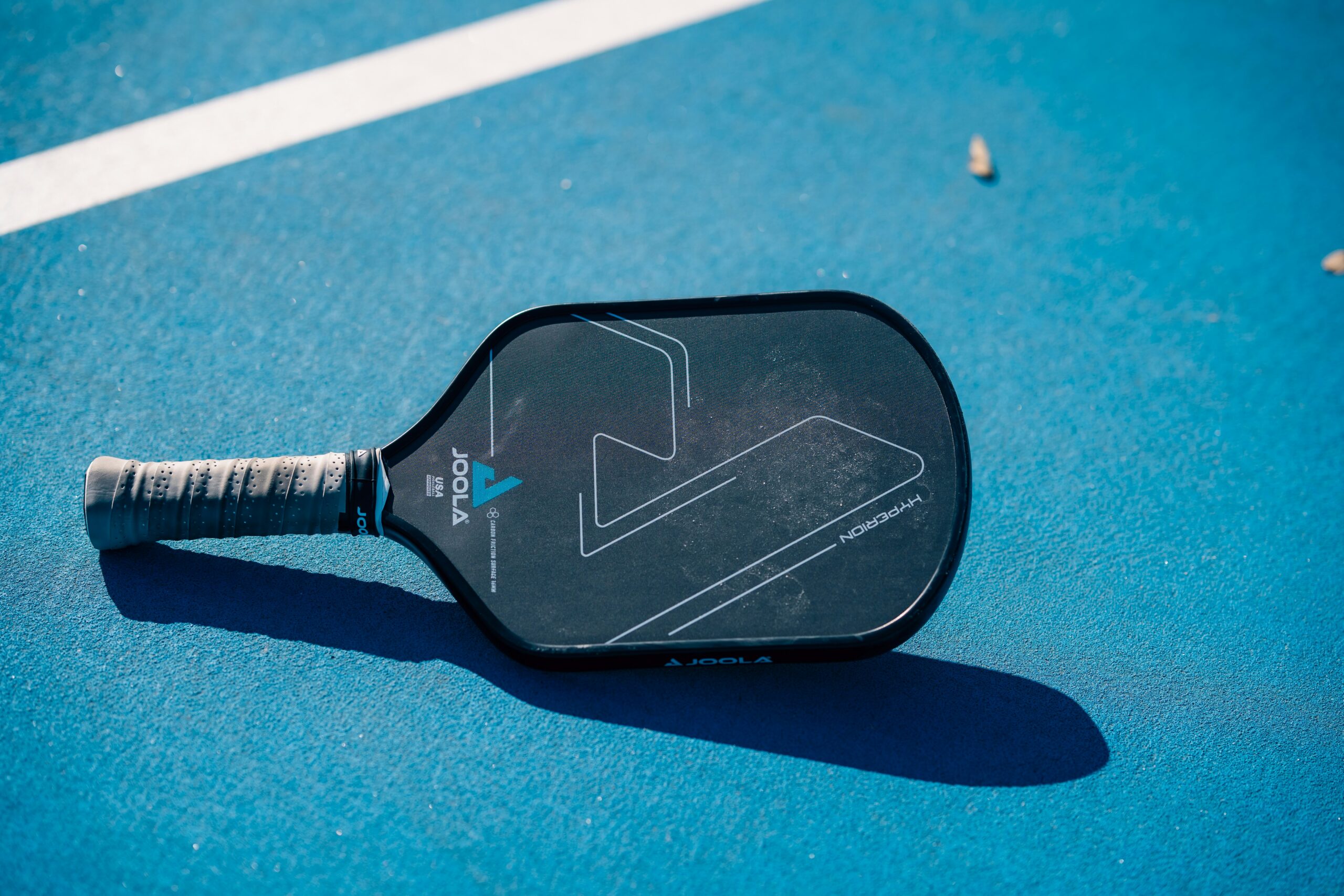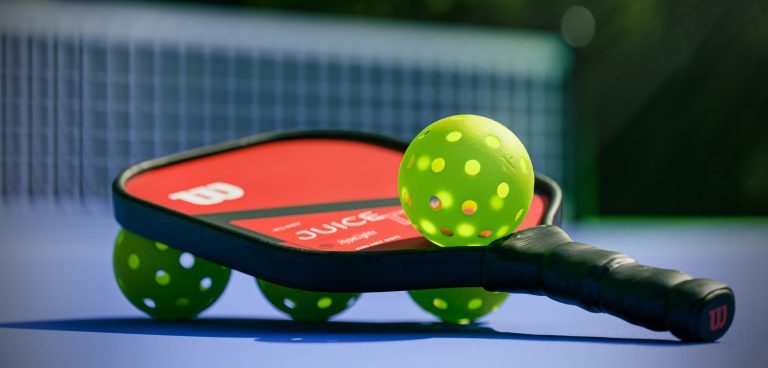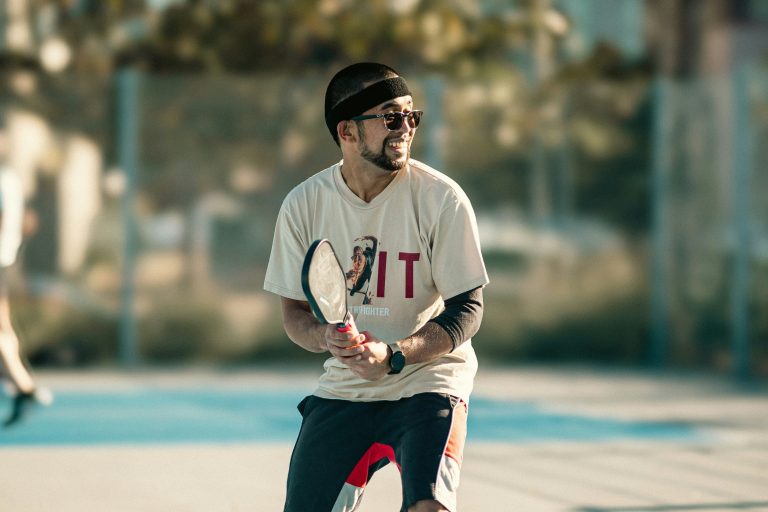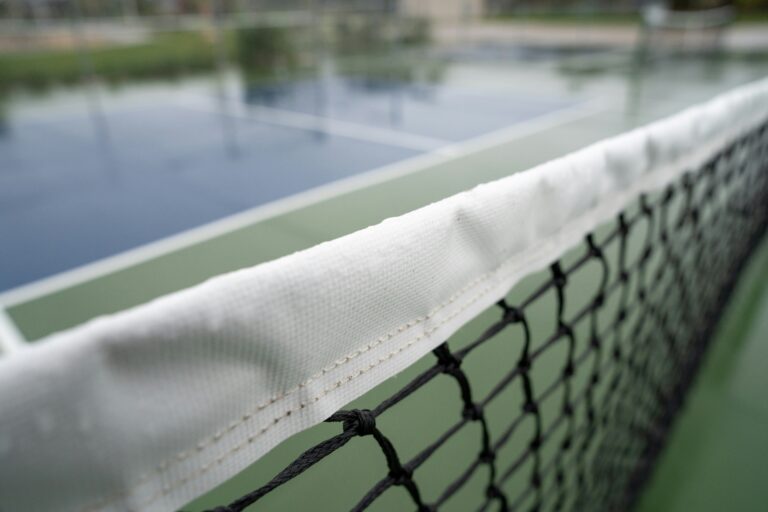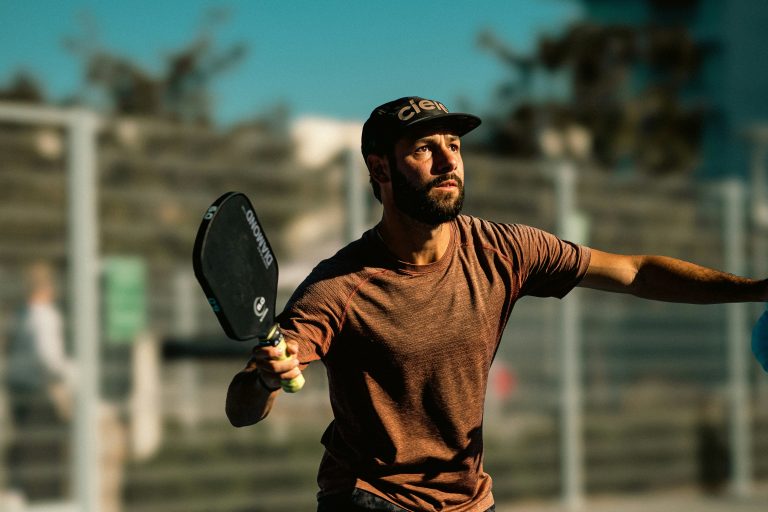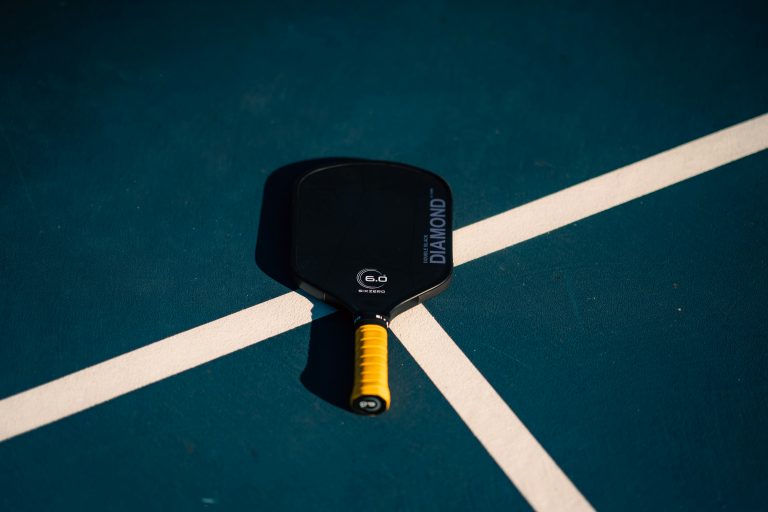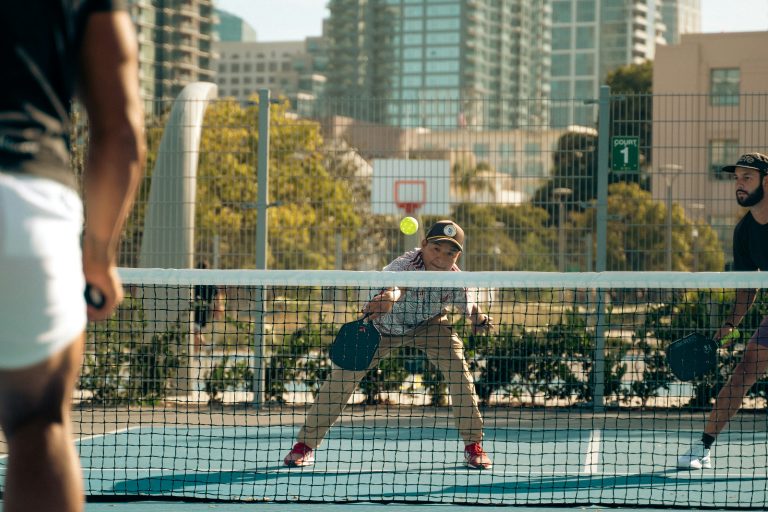How to Clean a Pickleball Paddle (Without Damaging the Face)
Updated October 2025
Most players think of paddle cleaning as an afterthought. You wipe the face with your shirt, maybe hit it with a paper towel, and call it good. But what starts as a few smudges can turn into a real problem.
Oil, dust, sunscreen, and sweat slowly build up on the surface. Over time, this film clogs the paddle’s texture, that fine grit that actually grips the ball. You start to lose spin, touch, and control. For raw carbon faces, that loss is dramatic.
Cleaning your paddle isn’t just about looks. It’s a performance tune up. Done right, it restores bite, preserves surface integrity, and helps your expensive gear last longer.
What Not to Do (Common Mistakes Players Make)
Before we get into proper cleaning, let’s talk about what not to do.
- Don’t use alcohol wipes or acetone.
These strip the surface coating or dull the carbon fiber grit. You’ll lose spin and ruin the texture that gives your paddle its feel. - Avoid soaking or rinsing under water.
Water can seep into the edges and soften adhesives, especially in thermoformed paddles. Always use a damp cloth, never submerge. - Skip paper towels or tissues.
They shed fibers and can scratch matte surfaces over time. - No kitchen sponges.
Even “soft” sponges can wear down the face or leave micro-abrasions.
If your paddle looks glossy or oily, that’s buildup, not something you can scrub off aggressively. The trick is to lift it gently, not grind it away.
The Right Way to Clean a Pickleball Paddle
Here’s the process I use (and recommend to everyone who owns a carbon or graphite paddle).
Step 1: Start Dry
Use a soft microfiber cloth like the MagicFiber Cleaning Pack to remove surface dust. Work in small circles across the face to loosen debris.
Step 2: Spot Clean with Mild Soap
Mix a drop of dish soap in a small bowl of warm water. Dip your cloth, wring it out until just damp, and wipe the paddle face gently. Focus on areas with visible smudges or sunscreen residue.
Step 3: Restore Surface Grit
For carbon fiber paddles (JOOLA, CRBN, etc.), dirt gets trapped in the microscopic pores that create spin. A pickleball specific cleaning block like the Selkirk Carbon Fiber Cleaning Block can restore that texture. Rub lightly in circular motions, then finish with a clean microfiber wipe.
Step 4: Clean the Grip
Grips get grimy fast. Use a slightly damp cloth with soap to wipe the handle, or replace it entirely with a fresh Gamma Supreme Overgrip if it feels slick.
Step 5: Air Dry Properly
Set your paddle upright on a towel face up, handle down. Avoid sunlight or heat sources. Let it dry naturally before putting it back in your bag.
Cleaning by Paddle Type
Each face material needs slightly different care.
Raw Carbon Fiber
Carbon paddles like the JOOLA Perseus, CRBN-2X, and Six Zero Double Black Diamond need the most gentle cleaning. Use only microfiber cloths and cleaning blocks, no moisture heavy methods.
Graphite
Graphite paddles (like the Paddletek Tempest Wave) are a little more forgiving but still dislike harsh chemicals. Mild soap and water work fine.
Fiberglass
Fiberglass faces, common in midrange paddles, can handle damp cloth cleaning. Avoid letting water sit near the edges.
Textured Coatings
If your paddle has a printed grit surface (like some Franklin or HEAD paddles), never use a cleaning block. It’ll strip the grit layer. Stick with damp wipes only.
How Often Should You Clean Your Paddle?
It depends how often you play:
- Daily or 3–5x per week: Wipe down after every session, deep clean weekly.
- Casual play (1–2x per week): Deep clean every 3–4 sessions.
- Indoor players: Less dust, but still wipe down, oils from skin and grips build up indoors too.
You’ll know it’s time when your paddle looks shiny or your spin suddenly disappears.
Quick Cleaning Between Matches
If you’re mid-tournament or drilling and notice your paddle losing bite, do a 30-second refresh:
- Wipe the face with a dry microfiber cloth.
- Blow or tap off any dust.
- If needed, rub lightly with a dry cleaning block.
Never apply water courtside, moisture and pickleballs don’t mix.
Paddle Maintenance Tools Worth Having
Building a small paddle care kit takes $25–40 total and lasts a long time.
| Product | What It’s For | Link |
| Selkirk Carbon Fiber Cleaning Block | Restores texture and spin on raw carbon paddles | Check Price |
| MagicFiber Microfiber Cloth Pack | Removes dirt and oil without scratching | Check Price |
| JOOLA Paddle Cover | Protects face from dust and scratches | Check Price |
| Gamma Overgrip Set | Replaces worn grips that trap sweat | Check Price |
| Prolite Edge Tape Armor | Prevents moisture from seeping into edges | Check Price |
Deep Cleaning a Paddle That’s Been Neglected
If you’ve never cleaned your paddle (don’t worry, most people haven’t), here’s how to bring it back to life.
- Dry Wipe First: Always start by removing surface grit.
- Damp Clean: Use mild soap water, barely wet, and gently wipe down.
- Dry Immediately: Pat dry, then air dry upright.
- Restore Grip: Clean the handle, then replace the overgrip if it smells or feels gummy.
- Inspect for Damage: Check for edge separation, face bubbling, or soft spots.
If you notice dead zones (where the paddle feels flat or muffled), cleaning might help temporarily, but it’s often a sign of delamination or worn core — time to replace.
Do’s and Don’ts Summary
Do:
- Use microfiber cloths.
- Wipe after every session.
- Keep the paddle in a cover.
- Store indoors away from humidity.
Don’t:
- Use alcohol, bleach, or acetone.
- Submerge in water.
- Use paper towels or abrasive pads.
- Leave it in a hot car or wet bag.
How Cleaning Affects Performance
Players underestimate how much cleaning changes feel. A clean paddle grabs the ball. You’ll feel more feedback through your fingertips. Drops and rolls come off with control again.
Raw carbon surfaces in particular rely on texture ,if oil fills those pores, your paddle behaves like fiberglass. Cleaning restores the “grit” that lets you roll topspin and control drives instead of just blocking them.
You can test this by hitting soft rolls before and after cleaning — the difference in ball dip and trajectory is obvious.
Long-Term Care: Beyond Cleaning
Cleaning helps, but paddle life is also about environment and habits.
- Avoid moisture: Don’t leave your paddle in rain or dew.
- Rotate paddles: If you own multiple, alternate to let one rest and air out.
- Monitor for soft spots: Press lightly around the center and any hollow or give means it’s time to replace.
- Use covers: Simple fabric or padded cases make a big difference for long-term preservation.
If you travel for tournaments, consider a hard shell paddle case, it prevents compression and keeps the surface grit intact during flights or car rides.
Final Thoughts: Clean Paddles Play Better
Your paddle is like a race car tire so the more contact it has with the surface, the more control you get. Dirt and oils act like ice between you and the ball.
Cleaning isn’t about being meticulous, it’s about preserving feel, spin, and value. A $200 paddle deserves five minutes of care every few sessions.
Do it right, and you’ll notice the difference immediately: the sound sharpens, the spin bites, and the ball listens again.
FAQ: How To Clean A Pickleball Paddle
Can I use a magic eraser to clean my paddle?
No. Magic erasers are abrasive, they’ll strip surface texture and reduce spin.
What’s the best way to clean sweat off grips?
Use a damp cloth with mild soap, then dry thoroughly. Replace overgrips regularly for hygiene and performance.
Do I need special products for carbon paddles?
Yes. Carbon cleaning blocks are made to lift dirt from pores without wearing down texture.
Can I use glass cleaner or Windex?
Avoid it. Most contain alcohol and surfactants that dull finish and break down resin.
How often should I replace my grip?
If it feels slick, smells, or darkens from sweat, usually every 20–30 hours of play.
Is paddle wax or polish a good idea?
No. Any polish fills the texture that generates spin. Keep it clean, not shiny.
